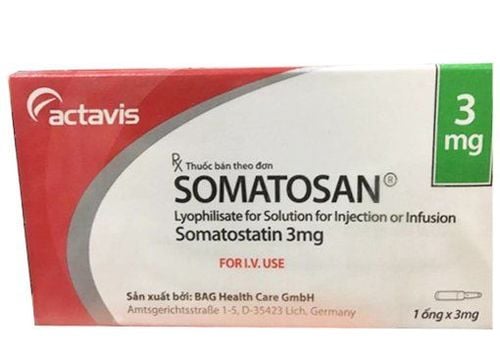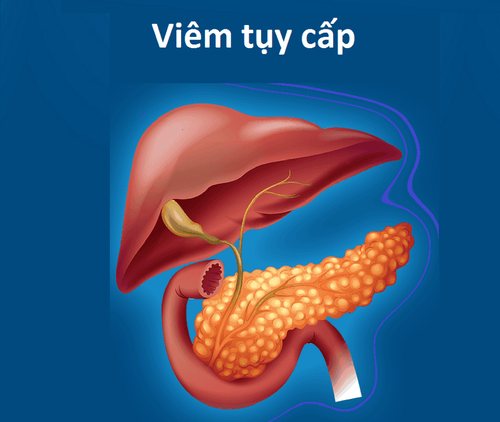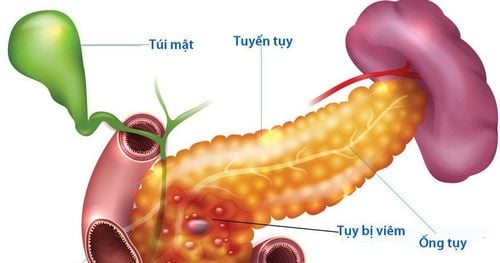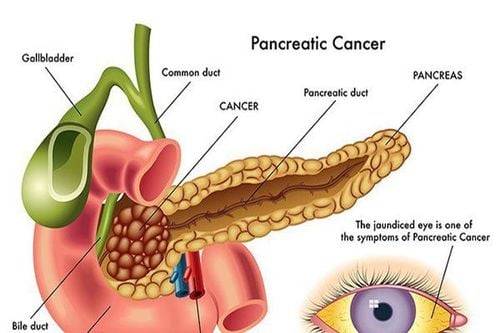This is an automatically translated article.
The article was professionally consulted by Doctor Do Thi Hoang Ha - Laboratory Department - Vinmec Hai Phong International General Hospital.
Amylase is an enzyme produced mainly in the pancreas and salivary glands and in negligible amounts in the liver and fallopian tubes. Amylase is involved in the digestion of complex carbohydrates into simple sugars. In clinical practice, blood amylase and urine amylase tests are valuable in diagnosing acute pancreatitis, acute exacerbation of chronic pancreatitis, stage of pancreatitis and differential diagnosis with other medical and gastrointestinal diseases.
1. What is an amylase test?
The amylase test is used to measure amylase enzyme activity in a blood sample taken from a vein or in a urine sample.Normally only a small amount of amylase is found in the blood or urine. But if the pancreas or salivary glands are damaged or blocked, more amylase is usually released into the blood and urine. In the blood, amylase levels rise for a short time. However, urine amylase levels can remain high for several days afterward.
2. Amylase is elevated in what cases?
Acute pancreatitis or exacerbation of chronic pancreatitis. In acute pancreatitis, blood amylase activity is often increased to 4-6 times the reference value and is often elevated in tandem with lipase levels. Pancreatic duct obstruction and pancreatic cancer. Elevated levels of amylase in peritoneal fluid can occur in acute pancreatitis but can also occur in other abdominal disorders, such as bowel obstruction or decreased blood flow to the intestines (infarction), small bowel perforation or perforated peptic ulcer. Amylase is also elevated in chronic pancreatitis often associated with alcoholism, trauma, and pancreatic duct obstruction. Drug-induced acute pancreatitis (corticosteroids, dexamethasone, mercaptopurine, furosemide...). Acute alcohol poisoning. Diseases of the biliary tract: common bile duct stones, acute cholecystitis, biliary obstruction... End stage renal failure. Salivary gland disease: Acute or chronic inflammation of the salivary glands, blocked salivary ducts, mumps. Diabetic ketoacidosis Hyperthyroidism
Trong viêm tụy cấp, amylase trong máu thường tăng lên gấp 4-6 lần so với giá trị tham khảo
3. Amylase decreased in what cases?
Decreased blood amylase levels in a person with symptoms of pancreatitis may indicate permanent damage to the amylase-producing cells of the pancreas, pancreatic cancer Severe liver damage: Toxic hepatitis, cirrhosis, infection pregnancy toxicity, severe burns. Severe thyrotoxicosis4. Amylase in urine
Since amylase is eliminated in the urine, a urine amylase activity test may be ordered with or after a blood amylase test when it is necessary to assess the effectiveness of treatment and determine whether amylase levels rise or fall over time. Urinary amylase activity is elevated for 7-10 days after acute pancreatitis, so a urine amylase test is useful to demonstrate acute pancreatitis after serum amylase activity has returned to normal.5. Indication of tests
The blood amylase test is ordered, along with the lipase test, to help diagnose and monitor acute or chronic pancreatitis and other pancreatic conditions. Exploration and diagnosis of inflammatory events in the abdomen. Diagnosis and monitoring of inflammation and blockage of salivary glands. Normal value in blood: 22-80U/L. Normal value in urine: 42-321U/L.6. How to take patient samples
A blood amylase test is performed on the serum. Ask the patient to fast before blood collection. Urine: Collect 24-hour urine specimen. Urine is stored in the refrigerator or on ice
Người bệnh nhịn ăn trước khi lấy máu
7. Implementation process
Blood amylase test Wrap an elastic band around your arm to stop the flow of blood. This will make the veins under the bandage larger, the nurse taking the sample can insert the needle into the vein more easily. Disinfect the injection site with alcohol Insert the needle into the vein: It may be necessary to insert the needle several times (when the patient is hemophilia) Draw blood into the syringe Remove the arm band when enough blood has been drawn Place a gauze or cotton swab over the needle puncture site when the needle is withdrawn Press on the injection site and then cover the amylase test Urine: Amylase can be measured in two ways, in a 24-hour or 2-hour urine sample. A 24-hour urine sample is the total amount of urine in a 24-hour period, the procedure is as follows: Start collecting urine in the morning but do not collect the first urine collection immediately upon waking. Notes should be made to mark the start of 24-hour urine collection. Collect all urine for the next 24 hours. Your doctor will provide a large container of about 1 gal (4 l) with a small amount of preservative to prevent urine from spoiling. Urinate into a small, clean jar, then pour urine into a large container, do not touch the inside of the container with your fingers. Keep large container in the refrigerator for 24 hours. The bladder should be emptied one last time or just before the end of the 24-hour period, add this urine to a large container and record the time. Remember that toilet paper, pubic hair, stool, menstrual blood, or other impurities should not be placed in the urine sample.8. The benefits of blood and urine amylase activity tests
This test is indispensable for all cases of abdominal pain suspected of pancreatic origin and cases of jaundice of unknown origin. Measurement of serum amylase activity is often done to differentiate abdominal pain due to acute pancreatitis from abdominal pain requiring surgical treatment of other causes. Serum amylase activity begins to increase 3 to 6 hours after the onset of acute pancreatitis and peaks around 24 hours. It returns to normal 2 to 3 days later. Urinary amylase activity is elevated for 7-10 days, so a urine amylase activity test is a useful test to demonstrate acute pancreatitis after serum amylase activity has returned to normal.It is also possible to quantify amylase activity in ascites or pleural fluid. Increased amylase activity in these fluids (greater than 1000 U/l) suggests effusion of pancreatic origin.
Evaluation of serum amylase activity for suspected cases of acute pancreatitis. Some normal patients have a condition called hyperamylase known as “macroamylase”. This condition is defined when the patient has elevated serum amylase activity but normal urinary amylase and no renal impairment. Abnormally elevated serum amylase activity in these patients is due to abnormal binding of amylase to a plasma globulin.
Customers can directly go to Vinmec Health system nationwide to visit or contact the hotline here for support.
MORE:
Learn about Amylase test Amylase test in acute pancreatitis Enzyme Lipase: What you need to know













